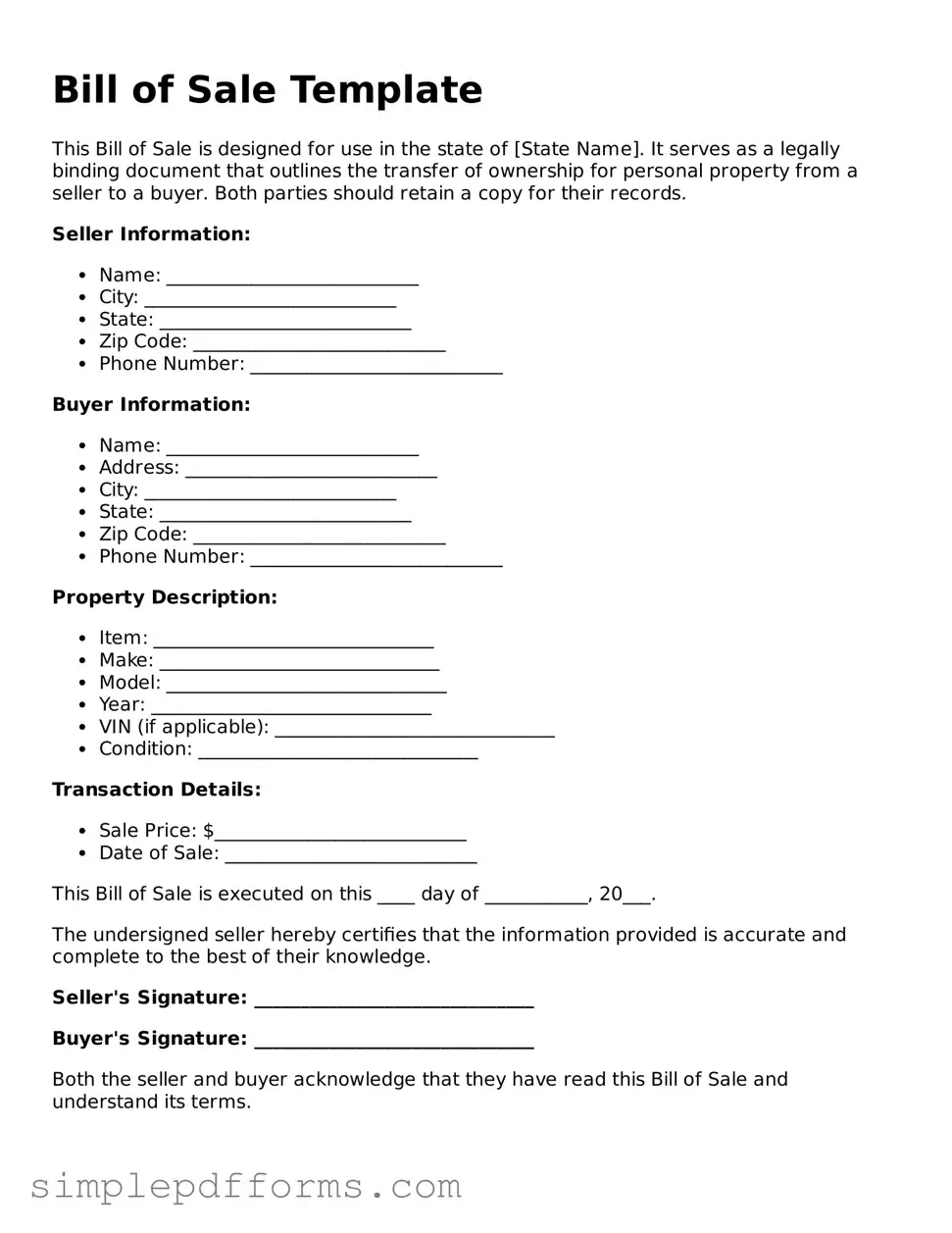When completing a Bill of Sale, individuals often overlook critical details that can lead to complications down the road. One common mistake is failing to include the correct date of the transaction. This date serves as a legal reference point, marking when ownership officially changes hands. Without it, disputes may arise regarding when the sale took place, potentially complicating matters of liability or warranty.
Another frequent error is neglecting to provide complete identification information for both the buyer and the seller. This includes names, addresses, and, if applicable, driver's license numbers or other identification. Incomplete information can create challenges if either party needs to be contacted later or if legal issues emerge related to the transaction.
People also often forget to accurately describe the item being sold. A Bill of Sale should include specific details such as make, model, year, and identification numbers, such as VIN for vehicles. Vague descriptions can lead to misunderstandings about what was sold, which could result in disputes over the condition or ownership of the item.
Additionally, many individuals fail to include the purchase price. This figure is crucial not only for record-keeping but also for tax purposes. Omitting this detail can raise red flags with tax authorities and may even lead to penalties if the transaction is not properly reported.
Another mistake involves not having both parties sign the document. A Bill of Sale is only valid when both the buyer and seller acknowledge the transaction by signing it. Without signatures, the document may not hold up in a legal context, leaving one party vulnerable in case of a dispute.
Finally, people sometimes overlook the importance of keeping a copy of the Bill of Sale for their records. After the transaction is complete, both parties should retain a signed copy. This serves as proof of the sale and can be invaluable in case of future disagreements or if questions arise regarding ownership or liability.
